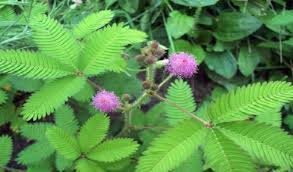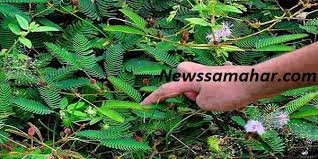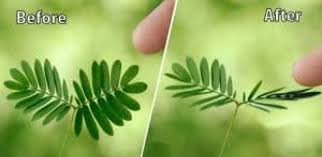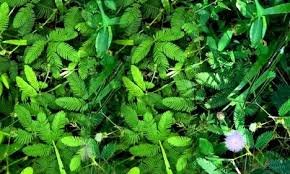Mimosa trees wonderful moments.
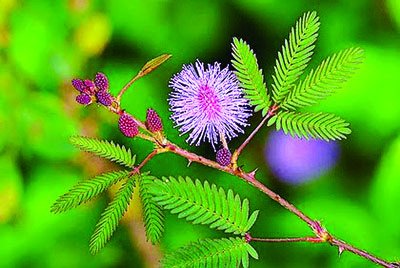
Traditional Chinese Medicinal practitioners have long revered the bark, leaves and flowers of the Mimosa tree for its potent health benefits. ... Similarly, the bark is used to cleanse the heart and liver meridians (energetic pathways) in the body Albizia julibrissin (Persian silk tree, pink silk tree) is a species of tree in the family Fabaceae, native to southwestern and eastern Asia. When touched, this sensitive leaf reacts to stimulus as there is a higher pressure at that point and the water in the vacuoles of the cells of the leaf lose water to the adjacent cell. All the water escapes the leaf (via the pulvinus) which then becomes flaccid. This causes the leaves to close.
Cut off a strip of bark all around the tree about six inches above the soil. Make the cut deep. This will kill the top of the tree, but the same resprout problem remains. You can also take control of mimosa trees by spraying the leaves with a solution of 2% glyphosate or triclopyr plus a 0.25% non-ionic surfactant.However, the DMT that can be extracted from the plant is a controlled substance, making the legal status of Mimosa hostilis somewhat ambiguous. Plants containing DMT are illegal to import or export. ... Mimosa hostilis itself is not a controlled plant, but extracting DMT is illega
Albizia is an herb that was originally grown in southern and eastern Asia. The flowers and stem bark are used to make medicine. Albizia is taken by mouth for anxiety, cancer, depression, sleep problems (insomnia), and sore throat; to improve mood; and to reduce swelling associated with trauma.Toxicity of Mimosa Tree. The mimosa tree, Albizia julibrissin, is a tree native to southern Asia that is now found in much of the U.S.both as a beautiful ornamental plant and as an undesired invasive species. Some parts of the plant are poisonous and of concern to livestock and pets and even humans.
Growth Rate. The mimosa tree grows quite quickly, usually adding 2 or more feet of height per year. That means it can reach its maximum height of 20 to 40 feet in 10 to 20 years, assuming you have not docked too much of its height will pruning.
Mimosa pudica (from Latin: pudica "shy, bashful or shrinking"; also called sensitive plant, sleepy plant, Dormilones, touch-me-not, or shy plant) is a creeping annual or perennial herb of the pea family Fabaceae often grown for its curiosity value: the compound leaves fold inward and droop when touched or shaken,The touch-me-not shrinks due to loss of turgidity (the pressure of content against the cell wall) by cells within the pulvini-specialised motor organs at leaf joints. Upon stimulation, like touching, the leaf cells lose potassium ions, triggering water to leave the cells through osmosis.
The canopy makes light dappled shade that is very pleasing. However, a mimosa tree is hard to garden under because the root systems are so invasive. Its powerful root systems can also lift and crack concrete if it is planted too close to sidewalks or driveways.It is also possible that importation of DMT containing Mimosa species into the United States could result in problems with customs,
especially if large volumes are imported. Although not a legal issue, EBay changed its policy as of May 15, 2011 banning the sale of Mimosa hostilis root bark through their site.Acacia floribunda, Tryptamine, phenethylamine, in flowers other tryptamines, DMT,tryptamine,NMT 0.3-0.4% phyllodes. Acacia longifolia, 0.2% tryptamine in bark, leaves, some in flowers, phenylethylamine in flowers, 0.2% DMT in plant. Histamine alkaloids. Acacia neurophylla DMT in bark, Harman in leaf.
Albizia is a genus of about 150 species of mostly fast-growing subtropical and tropical trees and shrubs in the subfamily Mimosoideae of the family Fabaceae. ... They are commonly called silk plants, silk trees, or sirises.Mimosa tree leaves are medium green in color, which nicely sets off the bright pink of the flowers. The tree is deciduous, which meansthe leaves drop from the tree in fall. They do not change color before they drop.The mimosa tree, sometimes called the Persian silk tree, is a legume and can help enrich the soil where it grows. ... The flowers are anywhere from pale to deep pink and form in clusters that look like fine silk threads. They form long pods 5-7 inches long that enclose the seeds.
Is my mimosa tree dead? ... This spring, the tree did not produce any leaves. The bark is peeling (but is thischaracteristic of a normal plant?). Although I know the mimosa is very sensitive to touch, and often drops its leaves, I wonder if this tree is actually dead. Avoid planting mimosa trees during the hottest times of the year. Planting during cooler weather allows the trees to become established in their new location before they endure hot, dry conditions. Spring or fall planting is usually best. Soil test kits are available at plant nurseries and garden centers.
The leaves close under various other stimuli, such as touching, warming, blowing, or shaking. ... The stimulus can also be transmitted to neighboring leaves. It is not known exactly why Mimosa pudica evolved this trait, but many scientists think that the plant uses its ability to shrink as a defense from herbivores.Keep the soil of a Sensitive Plant moist but never soggy. A Mimosa Pudica requires less water during the winter. Sensitive Plants thrive on rain water if it is not acidic. ... When kept indoors as a houseplant, a Sensitive Plant may never bloom but its leaves will still open and close.
This drink is also made with champagne and orange juice, but with a larger quantity of the wine. It is believed that four years later, in 1925, a bartender at the Ritz Hotel in Paris named Frank Meier invented the mimosa, which uses equal parts sparkling wine and juice. Acacia dealbata (known as silver wattle, blue wattle or mimosa) is a species of Acacia, native to southeastern Australia in New South Wales, Victoria, Tasmania, and the Australian Capital Territory and widely introduced in Mediterranean, warm temperate, and highland tropical landscapes.Mimosa hostilis (Jurema Preta, Calumbi (Brazil), Tepezcohuite (México), Carbonal, Cabrera ) is a perennial tree or shrub native to the northeastern region of Brazil (Paraíba, Rio Grande do Norte, Ceará, Pernambuco, Bahia) and found as far north as southern
Mexico (Oaxaca and coast of Chiapas), and the following Light pruning is safe any time of year, and mimosa trees are not particular about when they're pruned. If gardeners want to heavily cut back branches, however, the safest time is during the dormant period in February or March, when trimming won't disturb new growth or blossoms that appear in spring and summer.Albizia julibrissin (Persian silk tree, pink silk tree) is a species of tree in the family Fabaceae, native to southwestern and eastern Asia.It is recommend to soak the seeds 24 hours in water. Press the Mimosa Pudica seeds into the soil and lightly cover with 1/8 inch of soil. Keep the flower seed moist until germination. Covering the pot with clear plastic can help to hold in the moisture, but remove the plastic as soon as there is a sprout.
Traditional Chinese Medicinal practitioners have long revered the bark, leaves and flowers of the Mimosa tree for its potent health benefits. ... Similarly, the bark is used to cleanse the heart and liver meridians (energetic pathways) in the body.When touched, this sensitive leaf reacts to stimulus as there is a higher pressure at that point and the water in the vacuoles of the cells of the leaf lose water to the adjacent cell. All the water escapes the leaf (via the pulvinus) which then becomes flaccid. This causes the leaves to close.Jump below for a blast of the color of 2009: From todays Pantone press release: "Mimosa, a warm engaging yellow, brings hope and optimism during a time of economic uncertainty and political change. We have found no information that Mimosa pudica is toxic, but neither do we know if it is not. So, we have to tell you that Mimosa pudica is not native to North America. ... However, in our Native Plant Database, we do have Chamaecrista fasciculata (Partridge pea), which also has the common name of Sensitive Plant.
